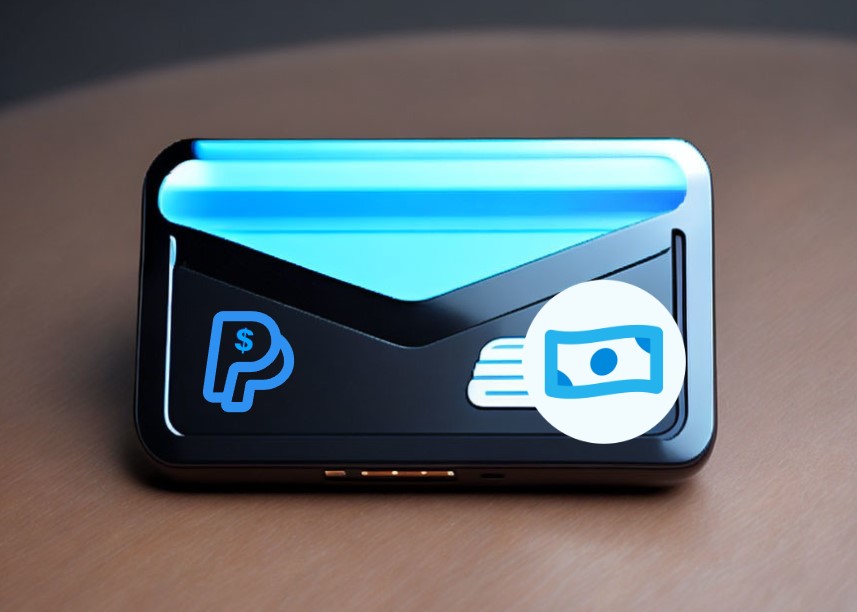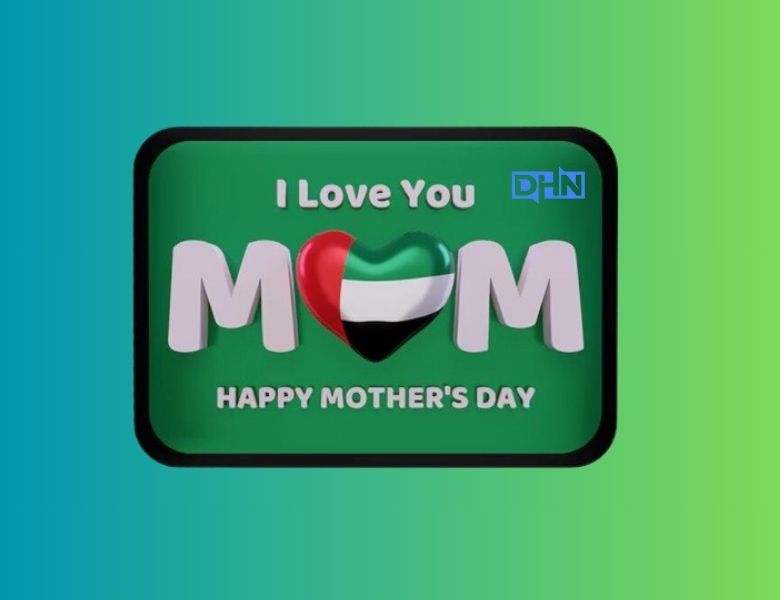
By: Admin
Oct 30, 2023
Paypal Influence In Shaping The Contactless Payment Ecosystem Of 2023
Welcome to the future of payments! In a world where convenience and security reign supreme, one company stands at the forefront of revolutionizing the way we make transactions – PayPal. With its innovative approach and unwavering commitment to pushing boundaries, PayPal has emerged as a game-changer in shaping the contactless payment ecosystem of 2023. Join us on this exciting journey as we explore how PayPal's influence is reshaping our financial landscape, empowering consumers, and transforming businesses. Get ready to embrace a cashless society unlike anything you've ever imagined – fasten your seatbelts, because this ride is about to get exhilarating!
Introduction to the growing trend of contactless payments
The rise of technology has greatly impacted the way we make payments. Gone are the days when carrying cash and counting change was the norm. With the advent of contactless payments, making transactions has become faster and more convenient than ever before.
Contactless payment, also known as tap-and-go or near-field communication (NFC) payment, allows consumers to pay for goods or services by simply tapping or waving their credit card, smartphone, or wearable device over a contactless-enabled reader. This method eliminates the need for physical contact with a card reader and speeds up the checkout process significantly.
In recent years, there has been a significant increase in the use of contactless payments globally. According to Statista, in 2020 alone, there were 2.6 billion contactless cards in circulation worldwide, with China leading the pack at 941 million cards. In fact, it is estimated that by 2024, there will be over 8 billion contactless cards in use worldwide.
One of the major driving forces behind this growing trend is PayPal - one of the world's largest online payment systems. Founded in 1998 and acquired by eBay in 2002, PayPal has revolutionized online payments and continues to shape the landscape of contactless payments.
Initially known as an e-commerce platform for online transactions, PayPal has expanded its reach into physical stores through partnerships with major retailers such as Walmart and Target. This move allowed consumers to use their PayPal accounts for offline purchases by linking their account to a
Evolution of PayPal and its impact on the digital payment landscape
1. Evolution of PayPal:
PayPal was founded in 1998 by a group of technology entrepreneurs, including Peter Thiel, Max Levchin, and Elon Musk. Initially, it began as a financial service for online payments and money transfers between individuals. However, over the years, PayPal has evolved into one of the leading digital payment platforms in the world.
In its early days, PayPal faced stiff competition from other online payment services like eBay-owned Billpoint and Yahoo's PayDirect. However, with its innovative approach to online transactions and partnerships with major e-commerce platforms such as eBay and Amazon, PayPal quickly gained popularity among online shoppers.
2. Impact on the Digital Payment Landscape:
With its easy-to-use interface and secure transactions, PayPal revolutionized the way people made payments online. It eliminated the need for traditional paper checks or money orders and made it possible to transfer funds instantly through email.
One of the most significant impacts of PayPal was that it provided an alternative to traditional banking systems for making payments and sending money globally. This helped small businesses expand their customer base beyond their local markets without worrying about currency conversions or cross-border transaction fees.
Moreover, with its buyer protection program and strict security measures, PayPal instilled confidence in both buyers and sellers to conduct business online without fear of fraud or scams. This led to an increase in consumer trust towards e-commerce websites that accepted PayPal as a payment method.
Furthermore, as smartphones became more prevalent globally, PayPal took advantage of this trend by launching a mobile
PayPal's role in driving the adoption of contactless payments
1. PayPal's Innovative Contactless Payment Solutions
PayPal has been at the forefront of driving the adoption of contactless payments, introducing innovative solutions that have revolutionized the way people make transactions. With its deep understanding of consumer behavior and payment trends, PayPal recognized the need for faster, safer, and more convenient payment methods.
In 2014, PayPal launched its first contactless payment solution called "PayPal Here." This mobile card reader allowed small businesses to accept contactless payments through their smartphones or tablets with a simple tap or wave of a card. This not only eliminated the need for cash or physical cards but also reduced transaction times significantly.
Following this success, in 2018, PayPal collaborated with Venmo to launch QR code payments. This feature enables users to scan QR codes at participating merchants' point-of-sale systems and complete transactions seamlessly through their connected accounts. It has gained immense popularity among millennials who prefer using digital wallets for convenience and security.
2. The Impact on Small Businesses
As a result of PayPal's innovative contactless payment solutions, small businesses have benefited significantly. By providing an easy-to-use and cost-effective alternative to traditional card readers, PayPal has made it possible for smaller merchants to offer various payment options without significant investment.
Moreover, with the global pandemic causing widespread closures of brick-and-mortar stores and social distancing measures in place, many small businesses were forced to shift their operations online. Through its platform integrations with popular e-commerce platforms like Shopify and WooCommerce, PayPal enabled
Key features and benefits of using PayPal for contactless payments
1. Key Features of PayPal for Contactless Payments:
a. Seamless Transaction Process:
One of the key features that makes PayPal stand out as a contactless payment method is its seamless transaction process. With just a few taps on your phone, you can make payments without having to physically swipe or insert your card into a terminal. This not only saves time but also reduces the risk of fraud and theft, making it a secure option for contactless payments.
b. Multiple Payment Options:
PayPal offers users multiple options to fund their account, including bank transfers, credit/debit cards, and even direct deposits from employers. This allows for more flexibility and convenience when making contactless payments.
c. Easy Set-Up:
Setting up a PayPal account is simple and straightforward, requiring only basic personal information and linking it with your preferred funding source. Once set up, you can easily use it for all your contactless transactions.
d. One-Tap Payment Option:
PayPal's one-tap payment feature enables users to make quick purchases by simply tapping on the designated button on their device screen. This eliminates the need to enter login credentials or card details every time you make a purchase, thereby streamlining the contactless payment process.
e. User-Friendly Interface:
The interface of PayPal's mobile app is user-friendly and intuitive, making it easy for people of all ages to navigate and use for contactless payments.
2. Benefits of Using PayPal for Contactless Payments:
a. Contact-Free Transactions:
In light
How PayPal is continuously innovating to improve the contactless payment experience
PayPal has been a pioneer in the world of digital payments since its inception in 1998. Over the years, it has continuously evolved and innovated to provide its users with a seamless and secure payment experience. With the rise of contactless payments, PayPal has taken significant steps to improve and shape the contactless payment ecosystem.
One of the key ways that PayPal is constantly improving the contactless payment experience is through its innovative use of technology. It was one of the first companies to introduce mobile wallets, allowing users to make payments using their smartphones. This proved to be a game-changer in making contactless payments more convenient and accessible for users.
In 2015, PayPal made another major stride towards enhancing the contactless payment experience by introducing One TouchTM. This feature allows users to stay logged into their PayPal account on their mobile devices, making it quicker and easier for them to complete transactions without having to repeatedly enter login credentials or card details.
Apart from technological advancements, PayPal also collaborates with various merchants and businesses worldwide to expand its reach and offer customers more options for contactless payments. In recent years, it has partnered with major brands such as Starbucks, Uber, and Walmart, enabling customers to pay using their PayPal accounts at these popular locations. This not only makes it more convenient for customers but also promotes wider adoption of contactless payments.
Another area where PayPal is continuously innovating is in terms of security measures for contactless transactions. The company employs advanced encryption technologies and multi-factor authentication
The future of contactless payments and how PayPal will shape it
The rapid advancement of technology has revolutionized the way we make payments, and contactless payments have emerged as a game changer in the financial world. With the rise of digital wallets and mobile payment options, traditional methods such as cash and cards are slowly becoming obsolete. In this ever-evolving landscape, PayPal has emerged as a key player in shaping the future of contactless payments.
1.1 The Growth of Contactless Payments
Contactless payments have been gaining momentum in recent years, thanks to their convenience and speed. According to Statista, the global value of contactless transactions is expected to reach $4.6 trillion by 2025, with a compound annual growth rate (CAGR) of 19.8%. This trend can be attributed to factors such as increasing smartphone adoption, changing consumer behavior towards digital payments, and technological advancements.
1.2 How PayPal is Shaping Contactless Payments
As one of the pioneers in online payments, PayPal has been at the forefront of driving innovation in the contactless payment ecosystem. It offers multiple contactless payment solutions that cater to different segments of consumers – from small businesses to large enterprises.
One significant contribution that PayPal has made is its development of Near Field Communication (NFC) technology for mobile devices. NFC allows users to make secure transactions by tapping their smartphones on an NFC-enabled terminal without having to swipe or insert a physical card.
Moreover, PayPal's acquisition of Braintree in 2013 helped it enter into partnerships with major retailers like Starbucks
Other players in the market and their response to PayPal's influence
The rise of PayPal in the contactless payment ecosystem has not gone unnoticed by other players in the market. As one of the pioneers and leaders in the field, PayPal's influence has had a significant impact on how other companies approach contactless payments. In this section, we will explore some of the key players in the market and their response to PayPal's influence.
1.1 Banks and Financial Institutions
Banks and financial institutions have traditionally been at the forefront of payment processing, but with the emergence of digital wallets like PayPal, they have faced stiff competition. In response to PayPal's growing influence, many banks have started to develop their own mobile payment solutions or partner with existing digital wallet providers.
For example, JPMorgan Chase launched its own mobile wallet called Chase Pay, while Bank of America partnered with Apple Pay to offer their customers an easy way to make contactless payments. This shows that banks are actively trying to keep up with changing consumer preferences and stay relevant in an increasingly digital world.
1.2 E-commerce Companies
E-commerce companies have also been impacted by PayPal's dominance in online payments. With its seamless checkout process and secure transactions, many e-commerce sites have integrated PayPal as a payment option for their customers. However, with the rise of other digital wallets like Google Wallet and Amazon Pay, e-commerce companies are facing pressure to diversify their accepted payment methods beyond just PayPal.
As a result, we are seeing more partnerships between e-commerce sites and other digital wallets as they strive to provide
Challenges and potential roadblocks
1. Challenges and potential roadblocks:
As with any new technology, the implementation of contactless payments through PayPal poses several challenges and potential roadblocks that need to be addressed in order for it to become a widely adopted payment method. In this section, we will discuss some of the key challenges and potential roadblocks that may hinder the growth of PayPal's influence in shaping the contactless payment ecosystem.
a) Consumer adoption: One of the primary challenges for PayPal in promoting contactless payments is convincing consumers to adopt this new way of paying. While there is a growing trend towards using mobile devices for payments, many people still prefer traditional methods such as cash or credit cards. Therefore, PayPal must invest in marketing and education campaigns to increase awareness and understanding among consumers about the benefits and security features of contactless payments.
b) Merchant acceptance: Another significant challenge for PayPal is getting merchants on board with accepting their contactless payment service. This requires a considerable investment from merchants in upgrading their point-of-sale systems to accept NFC (Near Field Communication) technology used by most mobile wallets, including PayPal. Additionally, merchants may be hesitant to adopt yet another payment method if they already have several options available.
c) Infrastructure limitations: The success of contactless payments also depends on its infrastructure support, specifically NFC-enabled POS terminals at retail stores. However, not all stores are equipped with this technology yet, which can create inconvenience for customers trying to make a purchase with their mobile devices. This lack of infrastructure could slow down consumer.
Leave a Comment
LATEST POSTS

Eyeshadow In Spanish: Embrace The Hottest Colors And Techniques

Corporette: Empowering Professional Women

Deciphering The Enigma: Unveiling The Secrets Of Iamnobody89757

The Unforgettable Styles Of Bob Mackie Fashions

0960 What Network? An Inside And Out Examination

Mother's Day In Uae: A Genuine Festival Of Parenthood
